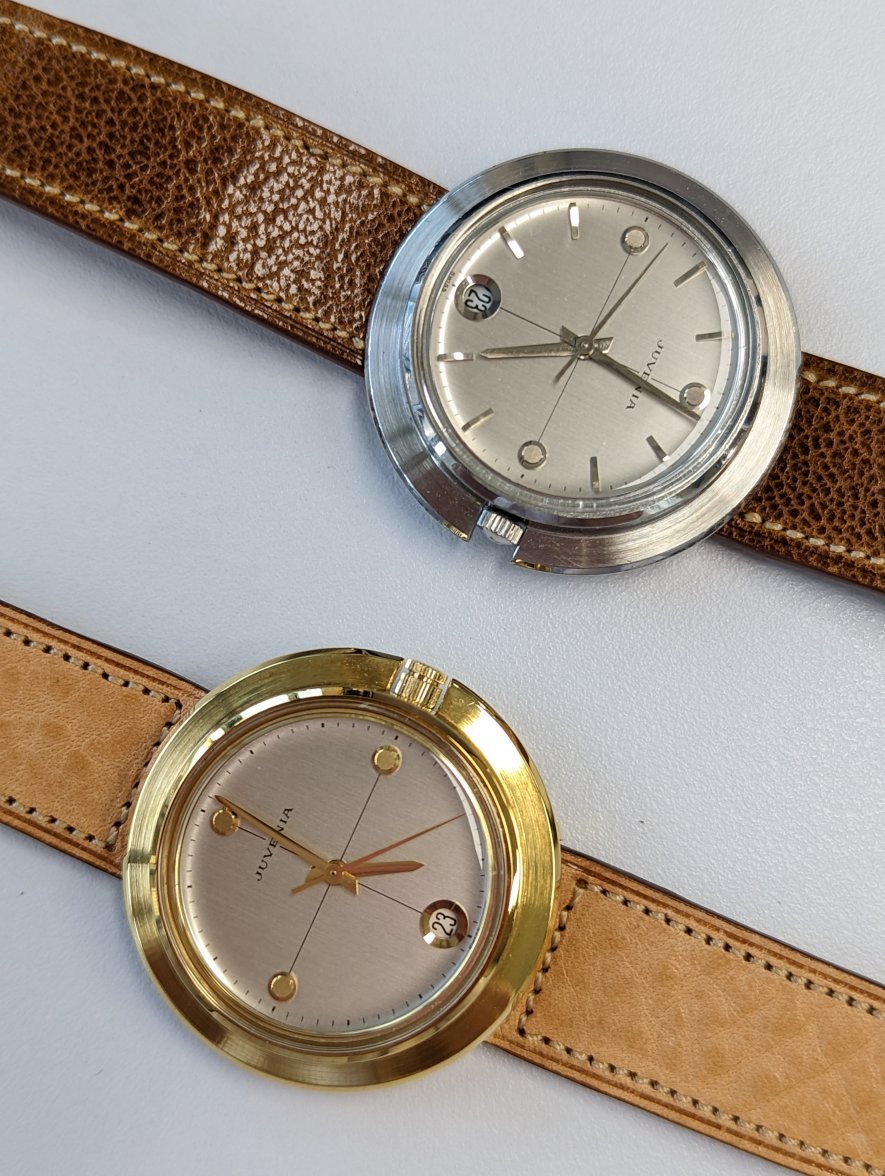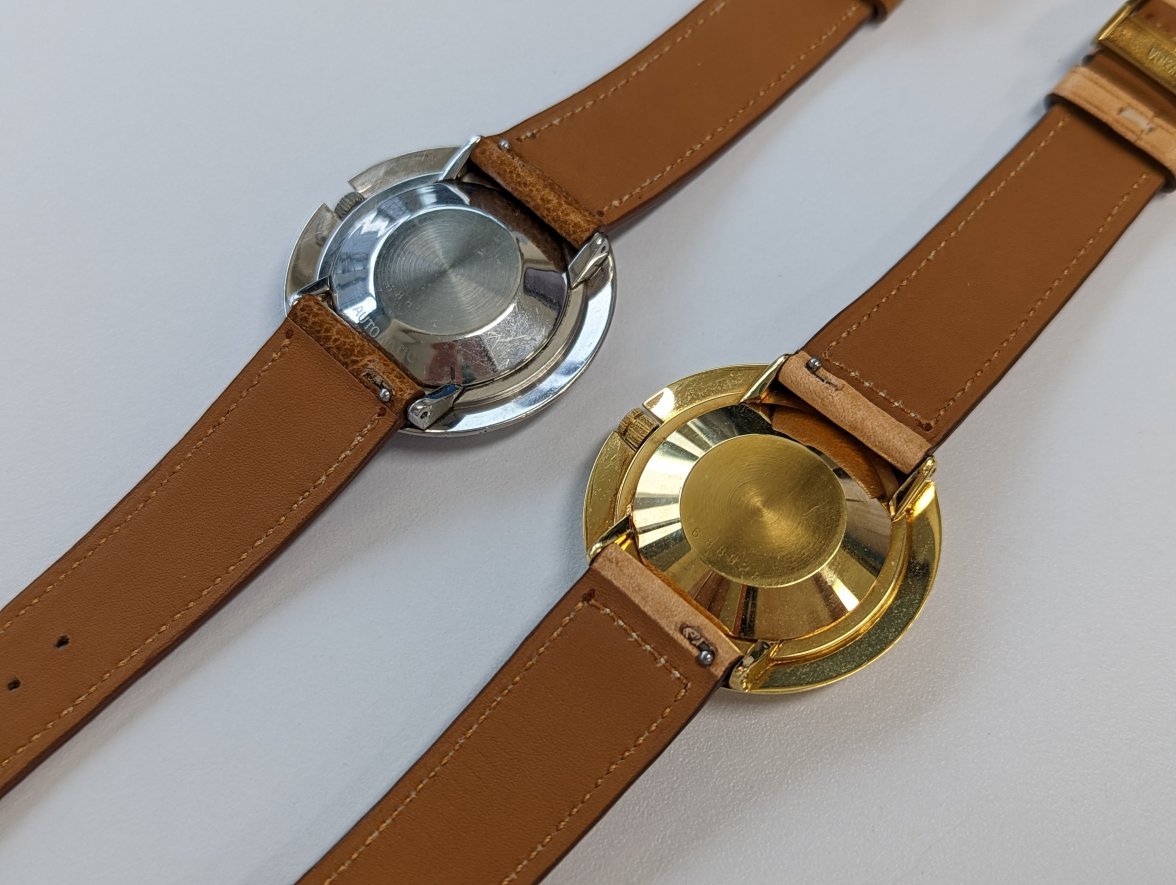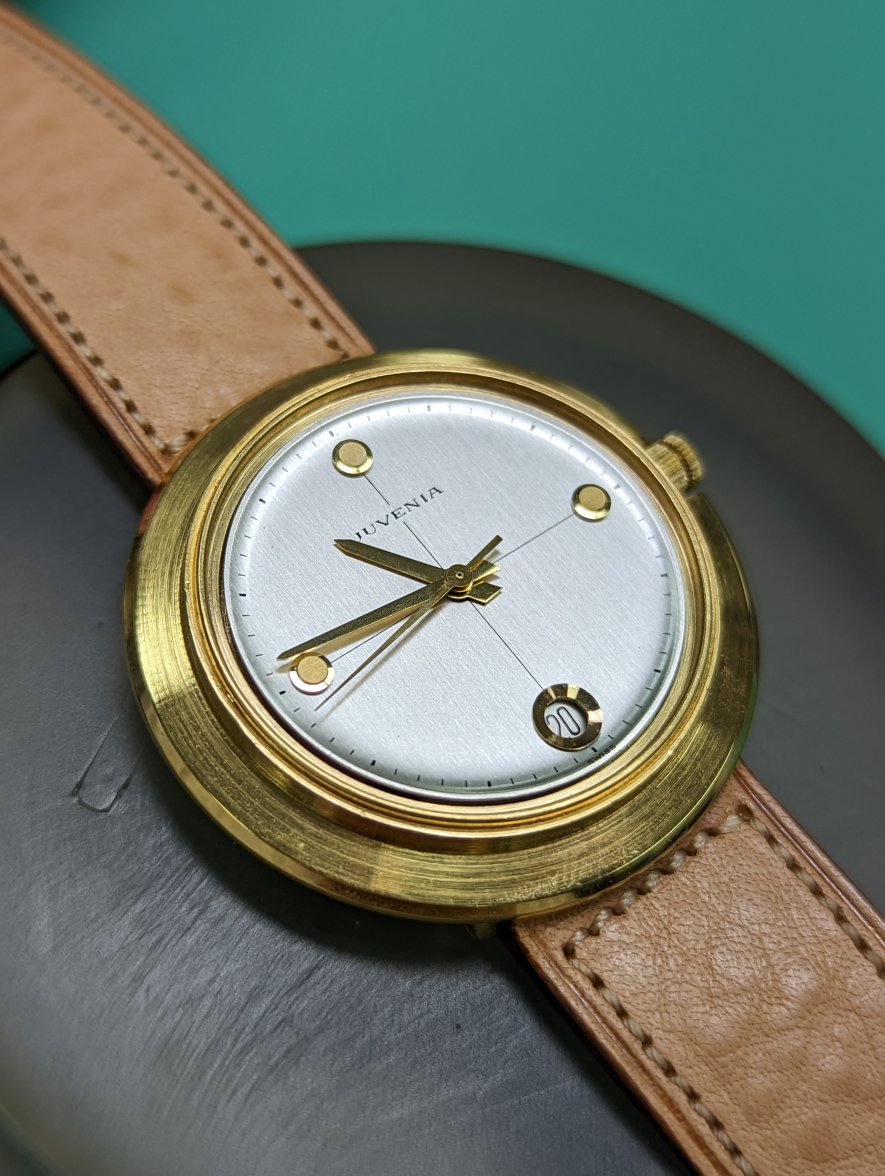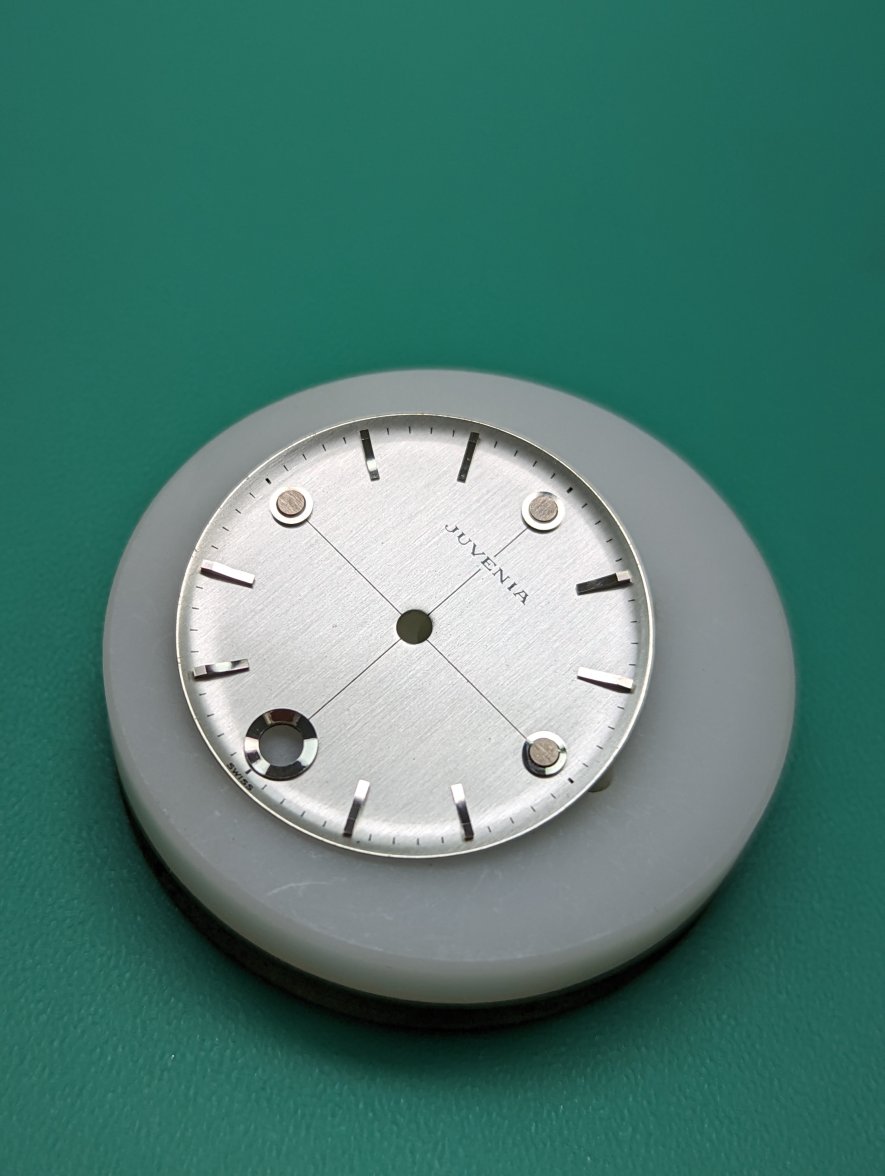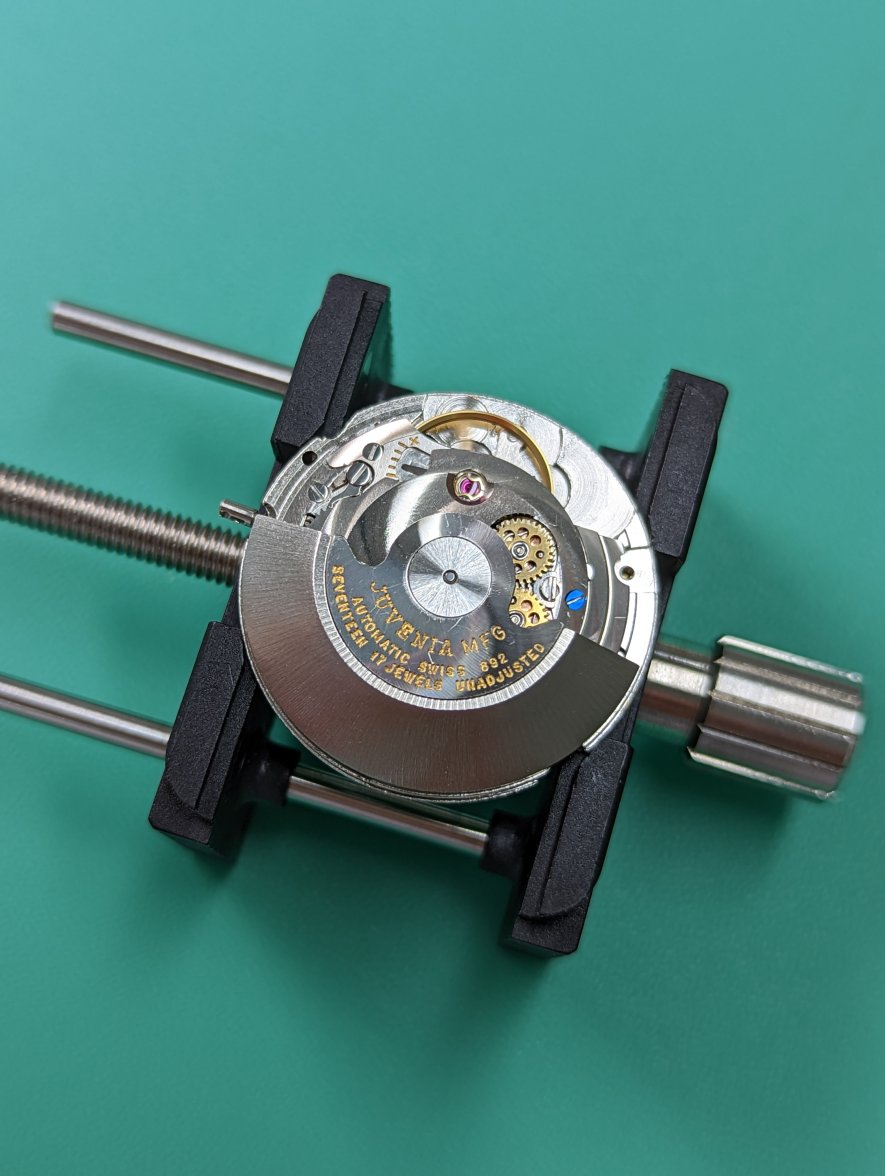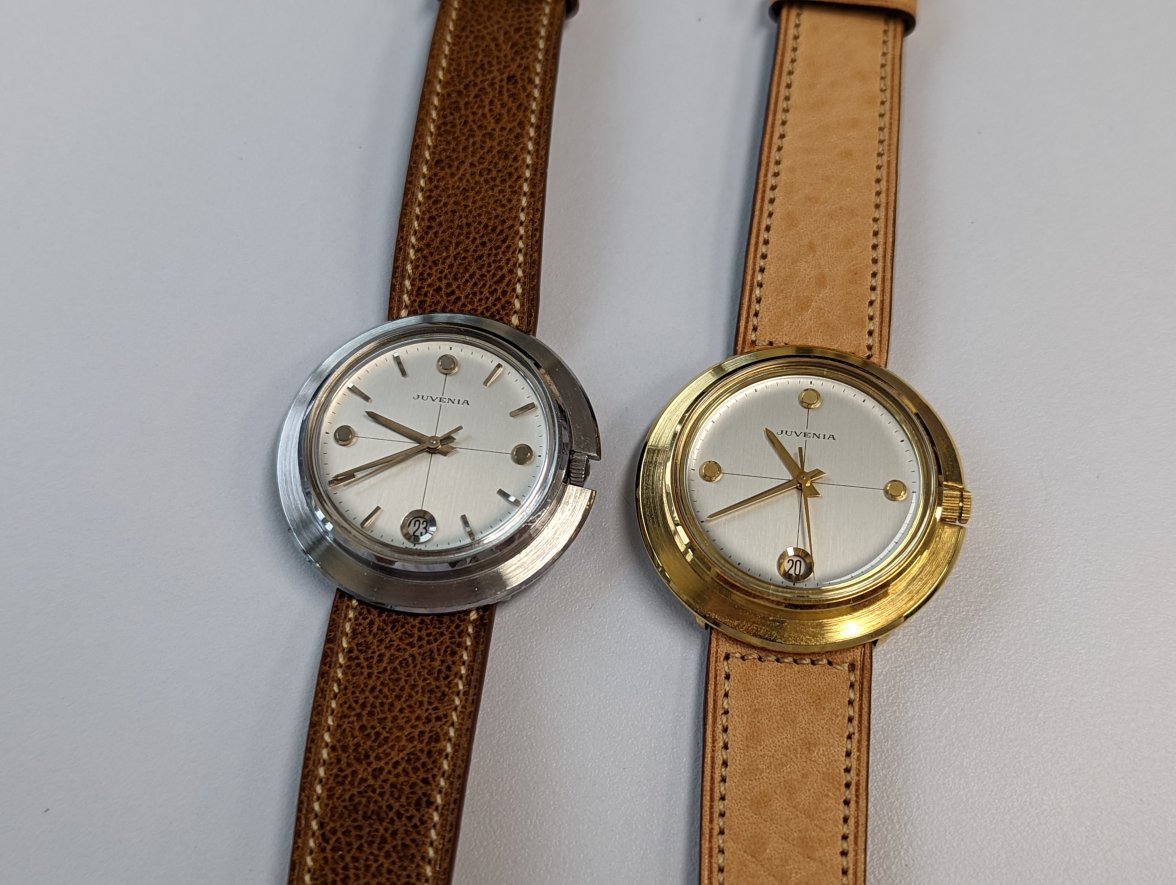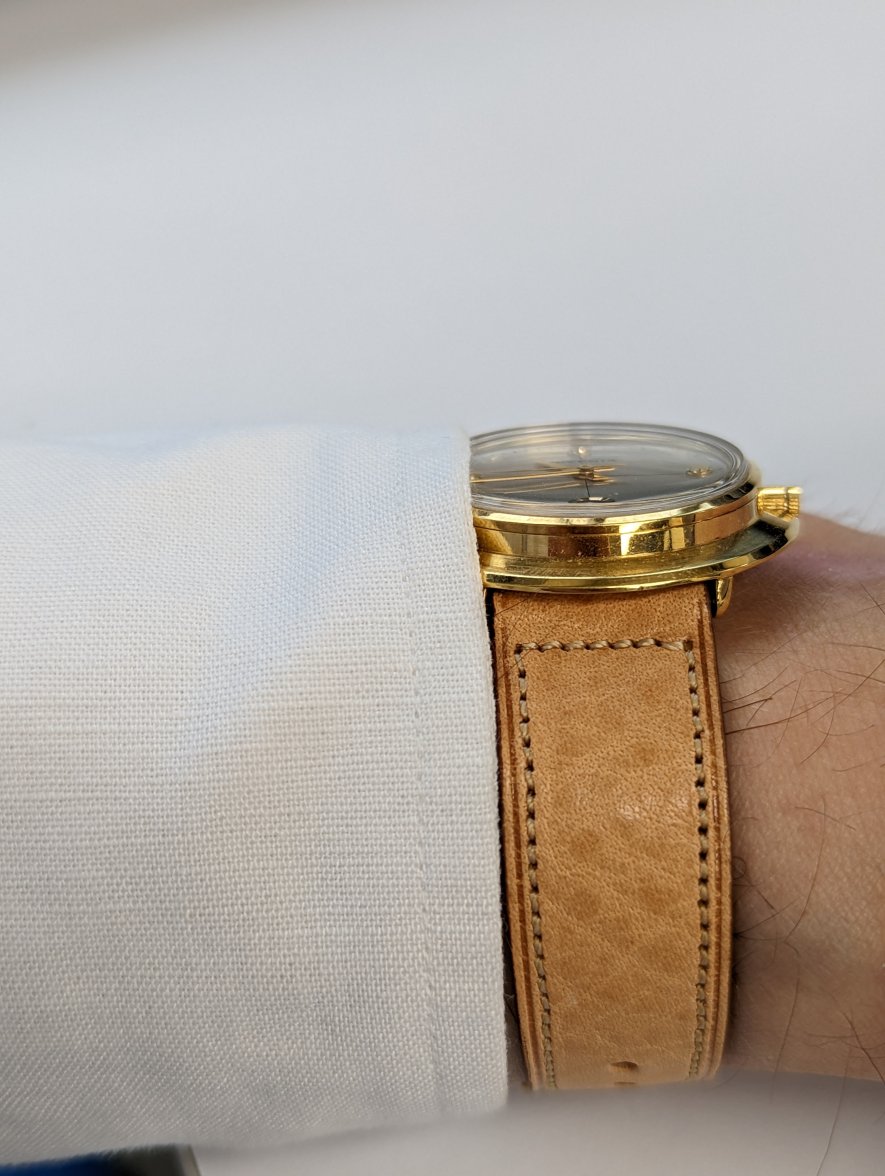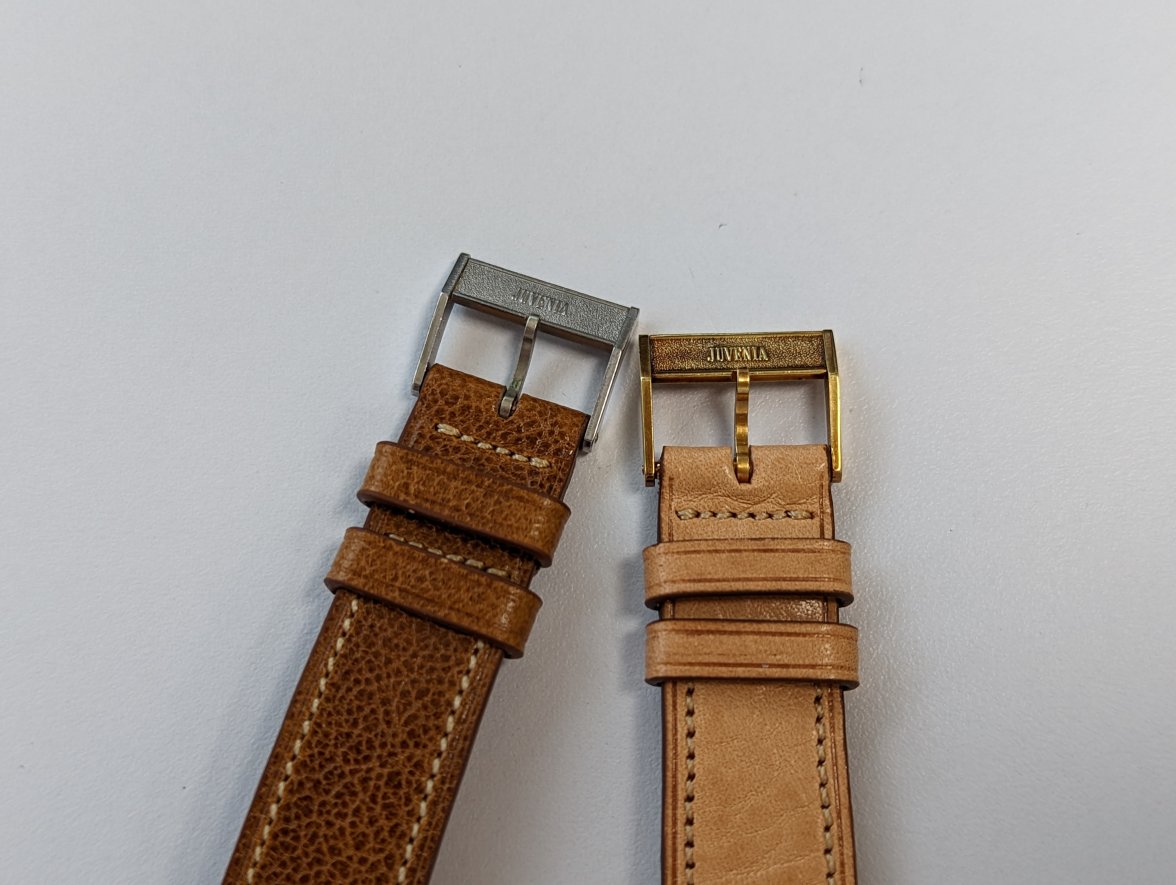Geezer
·Hi everyone,
I would like to share with you two watches from my small collection.
Juvenia is a company known mostly for their original and interesting designs. The most notable ones being the Arithmo, Mystère, Trigone, planète and of course the Architect.
I do not know the actual name for the watches I would like to introduce (if there actually was one). Although I am still hopeful that someday I may find an original advertisement that will solve this mystery.
I guess for now we can refer to this Juvenia Model as a Disco Volante, although I am not that pleased with this general name.
Let’s start with this picture:
These two Juvenia watches are from the early to mid 1960’s by my own estimations. I have one in stainless steel and one in 20 micron gold-plate. The movements are automatic with date (more details on that later).
The most outstanding aspects of these watches are the case and the dial. They are very interesting, and to me it seems like these were designed with much thought and eye for detail.
The case:
Only the case for the gold-plated version is stamped with the HF mark (made by Huguenin Freres), but I assume that the steel version is made by the same manufacturer. It measures around 37mm in diameter. The case middle seems to have been turned from one piece of metal and 4 lugs have been individually soldered to it. The movement is front-loaded and accessed by removing the bezel and crystal (with tension ring).
The crown on the steel model is not original. The gold plated version shows the correct crown for this model.
The dial:
The dials are made by Singer and there is a date indication at 6 o’clock. They are both straight-grained and have a crosshair and 3 large metal “dots” at 3, 9 and 12 o’clock. The steel version has applied markers for the remaining hours, whereas the gold-plated version is more plain. The dial is actually a dish shape, which is something I haven’t seen before.
The hands:
The hour and minute hands are interesting as they have an asymmetrical tail. I remember seeing this style of hands on several other Juvenia models. The hour hand on the steel model is longer than on the gold-plate model. It is in fact too long as it must be bent up in order to clear the date window at 6. Here are the hands in detail:
The movement:
The movement in these watches is the Juvenia calibre 892 which is basically an ETA 2472. This movement has an instantaneous date jump and is non-quickset. Its frequency is 18.000 vibrations per hour. It is a typical high quality movement but nothing fancy.
Conclusion
I can imagine the design of these watches is not for everyone, but I find these truly interesting. There are many cool and interesting details in this watch and overall the quality is very good (note: the case of the stainless version is nicer and better finished than the gold-plated one).
I hope you enjoyed this mini-essay. There are still many interesting watches out there that can be purchased for relatively affordable prices. I think these are great examples.
(These are not for sale!)
I would like to share with you two watches from my small collection.
Juvenia is a company known mostly for their original and interesting designs. The most notable ones being the Arithmo, Mystère, Trigone, planète and of course the Architect.
I do not know the actual name for the watches I would like to introduce (if there actually was one). Although I am still hopeful that someday I may find an original advertisement that will solve this mystery.
I guess for now we can refer to this Juvenia Model as a Disco Volante, although I am not that pleased with this general name.
Let’s start with this picture:
These two Juvenia watches are from the early to mid 1960’s by my own estimations. I have one in stainless steel and one in 20 micron gold-plate. The movements are automatic with date (more details on that later).
The most outstanding aspects of these watches are the case and the dial. They are very interesting, and to me it seems like these were designed with much thought and eye for detail.
The case:
Only the case for the gold-plated version is stamped with the HF mark (made by Huguenin Freres), but I assume that the steel version is made by the same manufacturer. It measures around 37mm in diameter. The case middle seems to have been turned from one piece of metal and 4 lugs have been individually soldered to it. The movement is front-loaded and accessed by removing the bezel and crystal (with tension ring).
The crown on the steel model is not original. The gold plated version shows the correct crown for this model.
The dial:
The dials are made by Singer and there is a date indication at 6 o’clock. They are both straight-grained and have a crosshair and 3 large metal “dots” at 3, 9 and 12 o’clock. The steel version has applied markers for the remaining hours, whereas the gold-plated version is more plain. The dial is actually a dish shape, which is something I haven’t seen before.
The hands:
The hour and minute hands are interesting as they have an asymmetrical tail. I remember seeing this style of hands on several other Juvenia models. The hour hand on the steel model is longer than on the gold-plate model. It is in fact too long as it must be bent up in order to clear the date window at 6. Here are the hands in detail:
The movement:
The movement in these watches is the Juvenia calibre 892 which is basically an ETA 2472. This movement has an instantaneous date jump and is non-quickset. Its frequency is 18.000 vibrations per hour. It is a typical high quality movement but nothing fancy.
Conclusion
I can imagine the design of these watches is not for everyone, but I find these truly interesting. There are many cool and interesting details in this watch and overall the quality is very good (note: the case of the stainless version is nicer and better finished than the gold-plated one).
I hope you enjoyed this mini-essay. There are still many interesting watches out there that can be purchased for relatively affordable prices. I think these are great examples.
(These are not for sale!)
Edited:
